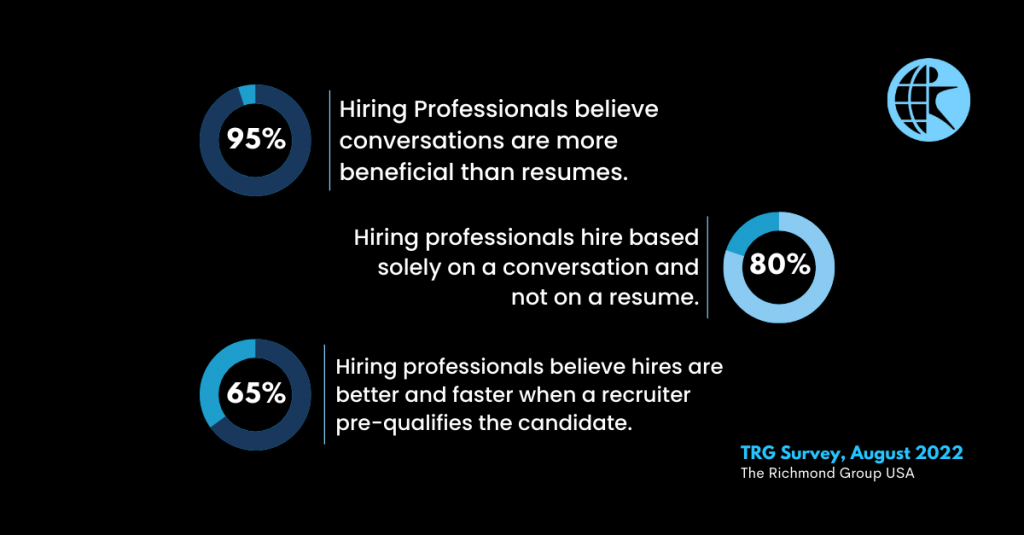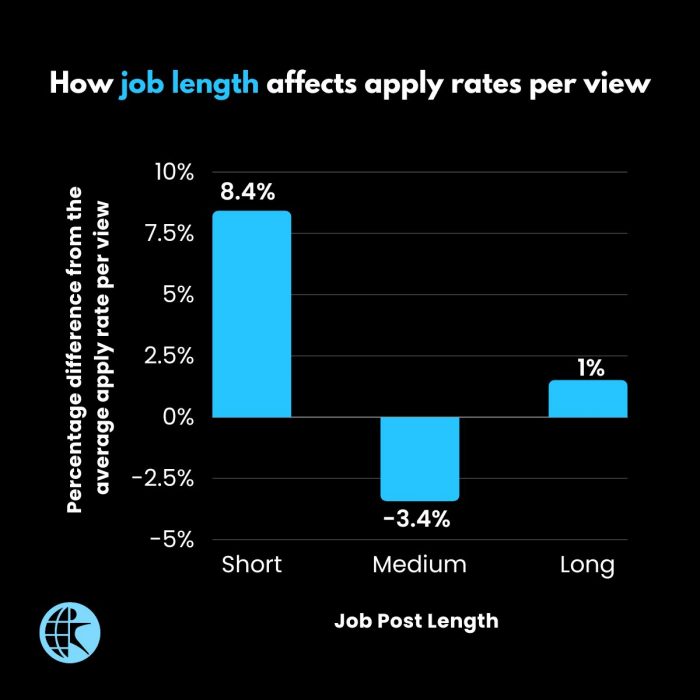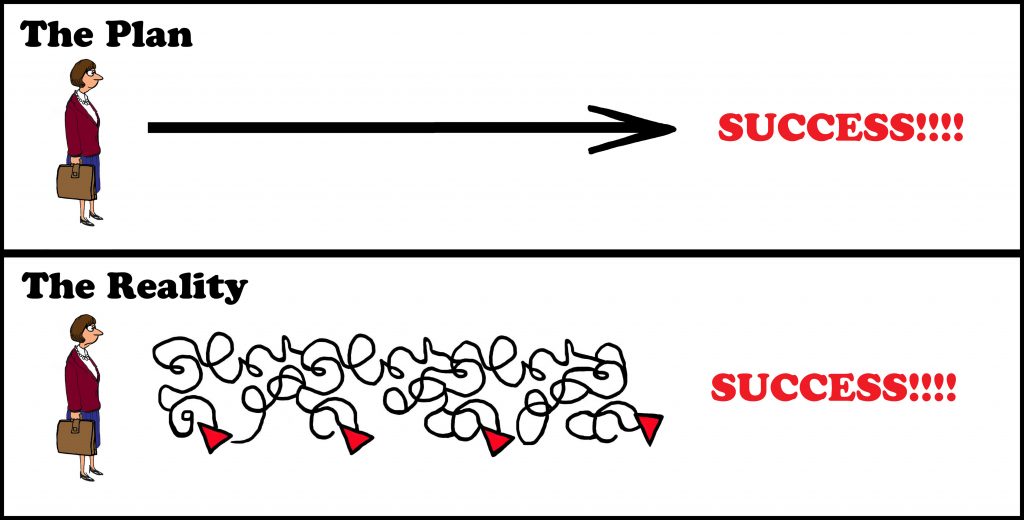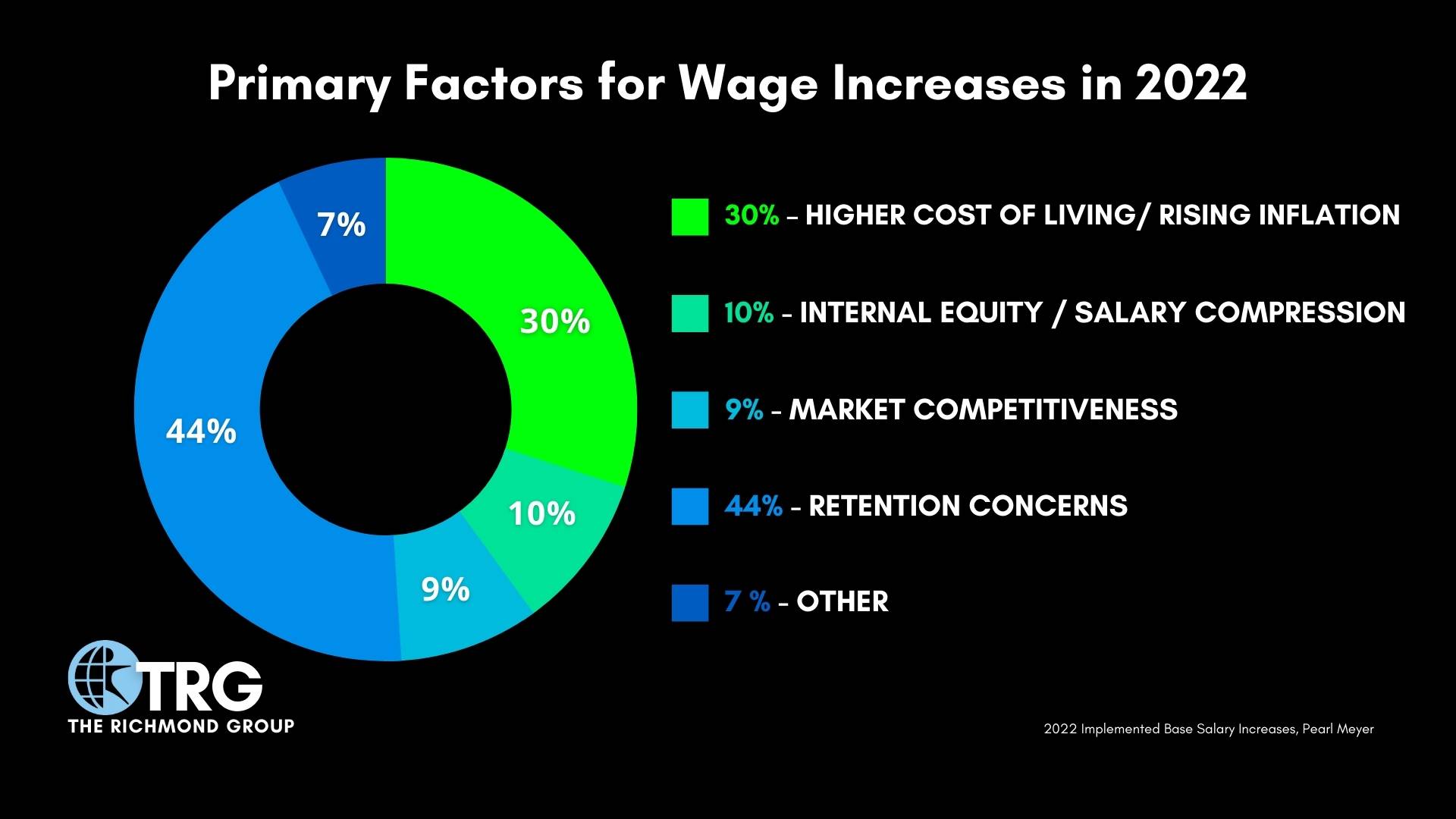Why are raises occurring?
The most prevalent factors for wage increase in 2022 are retention concerns, higher cost of living and rising inflation, internal equity and salary compression, high turnover rates, shortage of labor and market competitiveness. This perfect storm resulted in organizations raising salaries and benefits to retain and attract talent within their industries.
At The Richmond Group USA, we believe there is a right and wrong way to give a raise. When thinking about giving a raise, ask yourself:
How do you decide who to give a raise to and how much? Do you have a compensation strategy plan for your employees? Are you reactively or proactively giving this raise? Are you adjusting salaries based on annual merit raises and COLA factors? Are you structuring your pay system and processes?
Raises are customary, though we believe having a thorough discussion and tying a raise to agreed-upon goals is more rational and less arbitrary. Don’t put yourself in a compensation mess just to compete with the market. This will negatively affect you and your employees. Ensure you have a strategy and plan to give deserved raises to employees systematically.
Disconnection throughout your organization creates conflicts, if you are paying your employees what they deserve and giving raises routinely based on performance – you won’t find your company needing to compete.
We base our practices on being proactive, not reactive – resulting in a greater overall impact.
Have a plan so that the reasons you adjust salaries are creating impact and value among your employees and business. Use pay increases to set targets, goals and objectives, don’t just check off a box and add a number. Create a roadmap together.

















